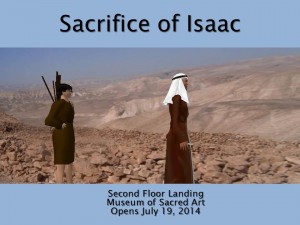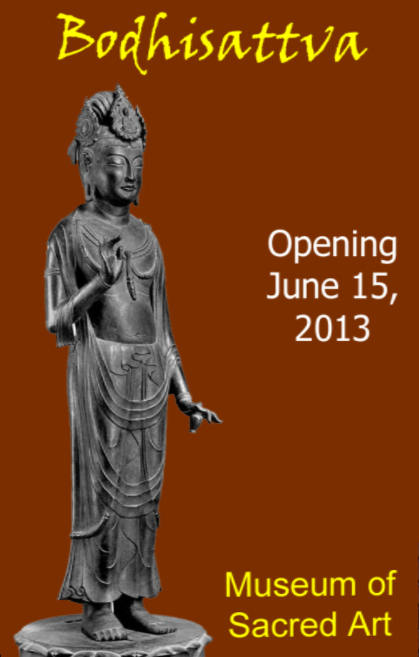Bodhisattva
Looking at God Through Diamonds
Renovation of Hindu Wing
September 30, 2011
In the first major renovation of a permanent wing, a new exhibition is being installed in the Hindu wing. The opening date has not yet been announced.

Presidios and Missions of Alte California
April 29, 2011
Exhibit opened March 19, 2011 in the Great Hall. Closing Date not yet determined
Beginning in 1867, Spain decided to settle Alte California as a response to Russian settlements moving down the coast and the threat of English speaking colonists arriving from east and west. Four presidios or forts, and 21 missions, were spread out along the coast from San Francisco to San Diego. Working with the military and settlers were Franciscan missionaries who gathered native peoples from diverse backgrounds into these missions. The colonization system as designed was bound to cause conflict between the military, settlers, missionaries and native peoples. The Indians suffered under the system but fared even worse after the mission system collapsed. Most of the churches of these missions survive today in some state of reconstruction and have inspired architecture and the imagination since. The exhibition looks at the history and architecture of the four presidio/missions of San Diego, Monterrey, San Francisco and Santa Barbara as well as the mission of Santa Clara.
Saint Catherine, Mount Sinai
December 31, 2010
Another short term exhibit was one on St. Catherine’s, Mount Sinai, in the Christian wing of the museum, as background for a pair of workshops. The second was held in the exhibition itself. Theophany, Spiritual Light and Transfiguration grew out of questions during the trip to the virtual Saint Catherine Monastery.
Looking at Architecture
December 31, 2010
The Looking at Architecture a major exhibition on various ways to understand architecture. Two buildings were featured, Frank Lloyd Wright’s Falling Water and Mies van der Rohe’s Barcelona Pavilion. Each of these buildings had been reconstructed as virtual models in Second Life and avatars had the opportunity to visit those while viewing the exhibition. Plans, models, sections, elevations, etc. were available for each. A second aspect of the collection was a look at various kinds and styles of architectural models that were created for various reasons throughout history. Physical models of the second life museum also were on view with the history of the client/architect relationship that resulted in the virtual Museum of Sacred Art.
Solstice Exhibit
December 31, 2010

The Solstice Exhibition was a very short exhibition coinciding with the summer solstice of 2010. The June Art History Workshop met in the exhibition space to discuss art relating to the solstice.
Opening Exhibit: Narrative Art
December 13, 2009
The Museum of Sacred Art is opening with the virtual equivalent of a blockbuster show called “Narrative Art, Storytelling in Pictures”. Peoples, cultures or traditions choose to tell stories that are a window into their thinking. Many of these tales were limited to oral narration and are lost. Still a large number have made it into the world’s literature. A smaller number of these stories were put into pictorial form. It leads one to wonder about what was illustrated and what was not. Why did the Assyrians leave visual representations of the power of their kings and why do we have no narrative images of the Sumerian creation or Gilgamesh stories? Why did the Shinto artists never illustrate their stories of creation and Amaterasu? Why did the Buddhist stories of the tales of Guanyin or Tara never get told in pictures? The Narrative Art exhibition will not answer any of these questions but hopefully will inspire others.
Grand Opening
November 19, 2009
The Museum of Sacred Art will celebrate its opening on Monday, December 14, 2009, 11:00 am SLT (Pacific Time)
Avatars Contributing to Opening of Museum of sacred Art in December 2009:
Adams Dubrovna
An Afterthought
Ariadne Lemon
ATIA Lowtide
Chelang Artful
Gaya Ethaniel
Longstrider Beornssen
Mariagra Lamplight
Sawyer Warrhol
Wuff Quixote








